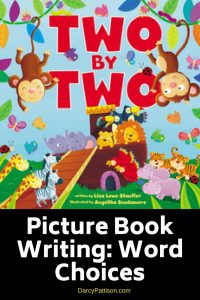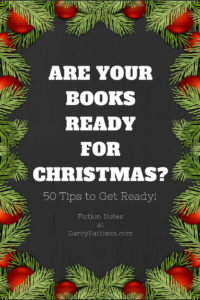Author newsletters are crucial, whether you’re an indie author or not. But for Indies, your newsletter could make or break your business.
This blog, Fiction Notes, has been going since 2008 (Yes! 10 years of archives! So search for topics!) My approach to author newsletters has been to sign up folks to get new blog posts by email. My author newsletter, in effect, has been an RSS feed, or the blog posts delivered to your email inbox. That’s worked well. But I think I need to consider some other options. This post won’t have answers. Instead, it’s me, thinking out loud about what I should do differently, and how to do it. Come back in a couple months or a year, if you want a structured How-To. This post is about options and thinking through those options.
Author Newsletters v RSS Blog Feed
Really? Do I have to write twice as much? That’s my first complaint about the idea of doing both an author newsletter and a blog post each week. I love y’all! I love that you read my blog. But I also want to spend time on my fiction. The indie author’s life is always one of balancing different needs and desires.
The blog-feed-as-author-newsletters has the advantage of killing two birds with one stone. I write once, and it goes out to readers, but also provides information to the internet at large, bringing in traffic and building readers one at a time. It’s simple to set this up through any email provider, from Mail Chimp to Convert Kit to Drip to Active Campaign. It’s a basic service for all providers. Why? Because it’s so simple and meets the needs of so many.
Crucial Question: Audience
But there’s a crucial question. Who are the audiences for author newsletters and blog feeds? I see the advantage of a separate newsletter because I’d write it for a different person. If you’ve bought, for example, Novel Metamorphosis: An Uncommon Way to Revise, you’d be more familiar with my work. Or if you’ve bought one of my children’s books, for example, The Nantucket Sea Monster: A Fake News Story, then you’d be familiar with my work in a different way.
How would I write differently to fans of my work? Would I tell you about different events? For example, in private author newsletters, I might write about recently negotiating Korean rights for The Nantucket Sea Monster. I regularly hire international illustrators, so it was interesting to see how different the Korean negotiations were. They definitely wanted paper contracts, and didn’t want to sign via a digital platform. Would that sort of personal story interest you?
And how many different author newsletters would I need to write? Too many.
So, here’s one of my particular problems: I write on very different topics.
Is there a way to write for both the nonfiction how-to-write fans and the children’s novels fans? Could one newsletter interest both audiences?
Right now, I have two websites: Fiction Notes at DarcyPattison.com and MimsHouse.com. That’s two blogs that need to be fed. If I try to add an author newsletters for fans on top of that, well, that’s a lot of writing.
So, can I do without a blog? Cut out one or both of the blogs?
That seems unthinkable. Fiction Notes is a way of life.
Mims House is a place to talk about my writing for kids.
I’m writing in a circle here, because it comes back to writing blogs and letting the newsletter be the blog-feed-as-author-newsletters. That still seems like a great option. After all, I have about 3000 people on my list. Not bad. I keep it clean and healthy, which means I regularly delete subscribers who don’t open emails.
And yet.
Here’s why I hesitate to accept that answer.
A Tale of Two Marketing Systems: My Response
David Gaughran wrote a set of crucial essays on his blog last year about the difference in Going Wide v Going Exclusive to KU. There aren’t right or wrong answers to this question. Instead, it’s a complicated moving-parts kind of decision. I’ve tried KU this year by going exclusive with a sci-fi trilogy, The Blue Planets World series. My page reads were growing nicely, until Amazon suddenly clamped down on some scam or other. If you had a sudden growth in page reads, they suspected that you were click farming. The weekend that happened is the weekend that I had scheduled some advertising efforts.
Instead of page reads climbing, they tanked. No one accused me personally of click farming or anything. They just erased the increase in page reads. I know the ads I had scheduled should’ve worked because I’d used them about four months earlier to nice effects. The day the ads went into effect, page reads tanked.
In other words, for me, I don’t want to ever again give Amazon control over my business.
Instead, I’ll go wide.
Going back to Gaughran’s post, then, what should I do to be successful?
Email marketing! Author newsletters, reader magnets, author newsletters swaps, competitions, Bookfunnel promos, Instafreebie promos, group promos. Without Amazon’s recommendation engine, I must find ways to bring an audience to my books. I also need to advertise on an ongoing low level all the time.
I’ve spent 15 months now faithfully working AMS ads with success. Scaling up is hard, but I think the low-level ads are fine. Gaughran says Wide Authors will have a slow burn, with slow growth, rather than the ups & downs, highs & lows of a KU Author. I’ve experimented with Bookbub CPC ads and need to return with a passion for optimizing. Maybe, I should try Facebook ads again, with a passion for optimizing. As Gaughran says, with permafree books, you have time to optimize ads.
EMail Marketing
So, I’m revisiting my options for email marketing, and especially the author newsletters which focuses on building a relationship with readers.
I’ll focus my efforts for the next six months to a year on doing some of these things:
- Automation Sequence. About 18 months ago, I moved from MailChimp to ConvertKit because I wanted multiple signup forms and the ability to tag readers. Automation sequences start with a sign up form.
The multiple signup forms are great – except they get messy after time. You put up a sign up form here or there – and you don’t write down which page it’s on. So, when your business goals change or the signup is no longer timely, it’s still lingering there on that blog post. I still get signups on a writing course that’s no longer active because somewhere on my blog, there’s a post with that signup form.
I need to go through everything and clean up the signup forms!
Then, there’s the automation sequence. This is usually 3-10 emails that are scheduled to go out after a certain event, such as a person signing up for your author newsletters. The purpose is to introduces you and your work to the new newsletter recipient. Essentially, you get them up to speed so they’ll get what you’re writing about.
I have several of those written. But are they effective.
And gee, how many of these things do I have to write? Could I write multiple email #1, and then feed the readers into the same Emails 2-10? In other words, customize the first email that a reader receives, depending on the sign-up form, but then, they go into the general sequence? I need to figure out how to streamline and optimize these automated sequences. - Segmentation. The idea here is to meet the needs of the readers by inferring their interests from the information you have. What info do you have? Where they signed up, what books they signed up for, and anything else you ask them. Of course, you usually ask for very little because if you ask for a lot, they won’t sign up. That leaves the signup forms as crucial, as are links that they click on. Most email software can track clicks, and some can tag a reader. For example, if you clicked on a link to my book to the Apple store, The Nantucket Sea Monster, I could set up the software to tag you with any or all of these: picture book, children’s nonfiction, Nantucket, Apple.
Later, when I have a new picture book nonfiction book come out, I can send that person a link to the Apple store and reasonable expect that they’ll be interested.
This type of capability is going to be crucial. But. Wow! It’s overwhelming. How do you get a handle on all the options. Do I need tags for each of the possible ebook stores: Apple, Kobo, Kindle, GooglePlay, MimsHouse website?
Where does segmentation end? How granular do you get?
- Gaining Readers. The other ongoing, never-ending question is where do you find readers? I’ve done a variety of things on a casual basis. I need to look again at advertising, promotions, newsletter swaps, and so on. What has worked on a casual basis and what has potential to scale up?
There are no right and wrong answers on these questions. There’s no business book to pick up that says, “Do this and you’ll succeed!” Even if there was, I wouldn’t trust it because each author is different and the answers will vary. There are only interesting articles like Gaughran’s A Tale of Two Marketing Systems that provoke thought. I think slowly about things. I do small experiments. I hedge my bets.
But sometime this year, I’ll start making decisions about where I want to head on email marketing. It’s a crucial question and it’s not easy to figure out. But I’m close to making decisions that I hope will 10x my business and sales of books this year! Close. Still a couple more small experiments to watch and evaluate. But close.



